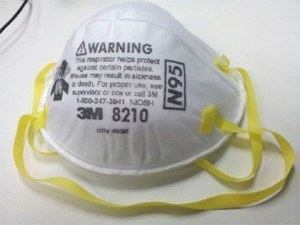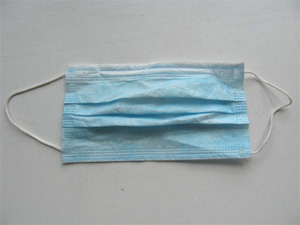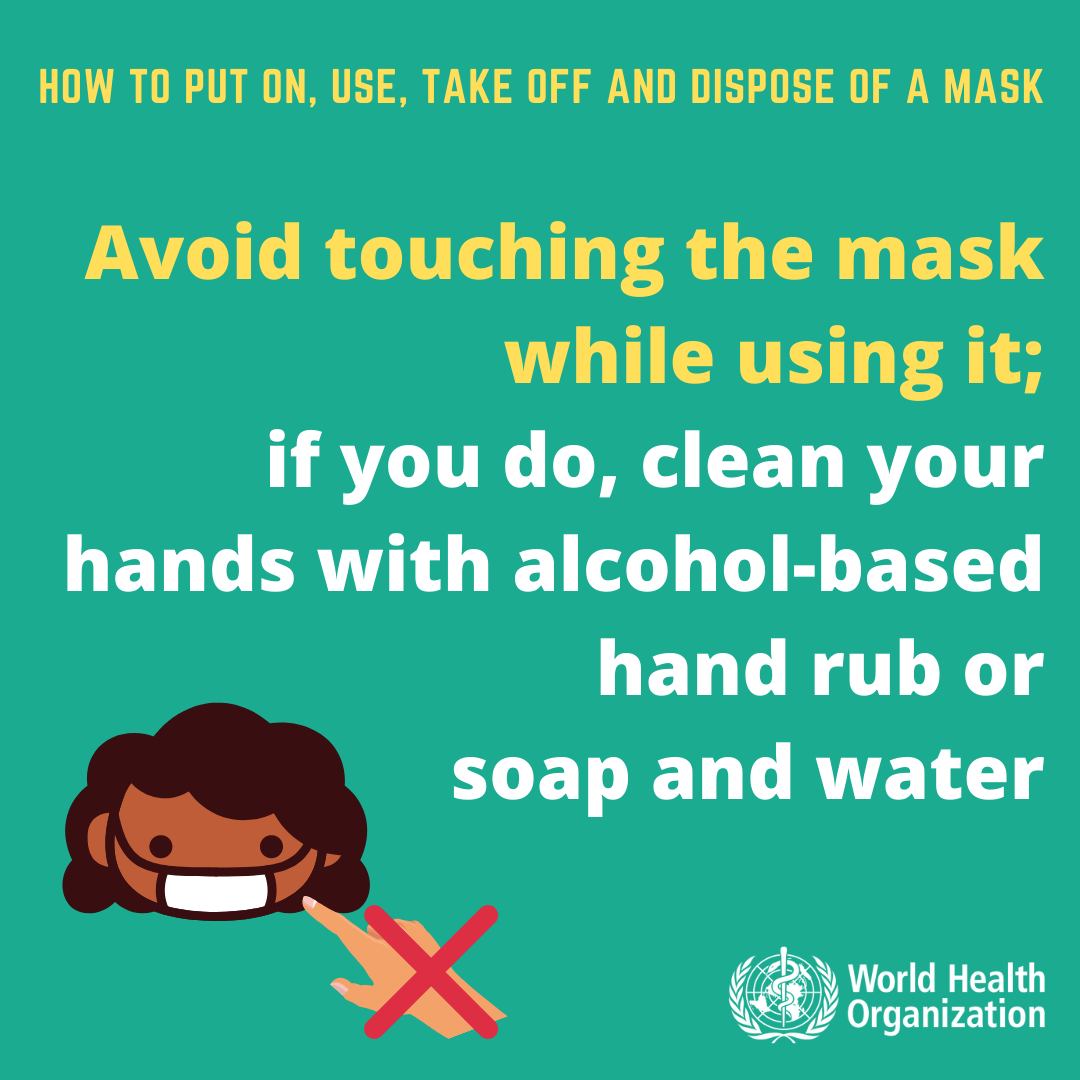Masks 4 All
Are masks really necessary for everyone? CDC says YES including people who are engaging in "high-intensity exercises." If you're doing group cardio INSIDE without a mask, you're risking your life.
The best way to survive a pandemic, is to take every reasonable precaution. Since the outbreak of COVID-19, healthcare organizations have been giving us lifesaving information. We were told the benefits of regular hand-washing, that we should avoid crowds and what symptoms to look for if we felt ill. But there was one piece of advice that made no sense.
According to the World Health Organization, “If you are healthy, you only need to wear a mask if you are taking care of a person with suspected [COVID-19] infection.” Masks are to be worn by healthcare professionals, the sick and people taking care of the sick.
So I started asking around. Why are masks such a bad idea for the general public?
The first excuse I was given was that most people would wear them wrong, making them useless. I pointed out that most people wash their hands wrong and for too short a time. That's why there have been massive information campaigns explaining how to do it properly. The same could be done for masks.
Then I was told that masks wouldn't help, because the virus is only spread through droplets.
At this point, I need to give a quick lesson about what comes out of our mouths. When you cough or sneeze, fluids can shoot out of your mouth. Droplets that are 5 micrometers or more are referred to as large droplets. They're heavy, they generally don't hang in the air very long and they typically don't travel more than 6 feet.
The COVID-19 virus hides in these droplets. If someone sneezes on you and it gets into your eyes, nose or mouth, you can get infected. The same is true if you touch surfaces that these droplets land on and then touch your face. The virus can live on metal or plastic surfaces for a day or more.
But when you sneeze, large droplets aren't the only thing that comes out. We also expel small droplets, less than 5 micrometers in size. Those size droplets can easily travel 10 feet or more with one good sneeze. Plus, since they're so small, they can remain in the air for an hour or longer.
That means when you're in public, someone could sneeze a few minutes before you arrive. Then theoretically, if you walk through that cloud of droplets a few minutes later, you could get infected. People who wear a mask, even simple cloth ones, get some protection from this sort of transmission.
I was then told that if everybody wore a mask, there wouldn't be enough for medical professionals. So I asked, do regular people need the fancy masks worn in hospitals? It turns out, we don't. There are lots of different types of masks, but I'm going to just focus on three.
N95 Respirators
N95 respirators are the ones that hospitals need. They're made of materials that filter out at least 95% of small droplets. Their design includes a way to make a tight seal around the nose and mouth so viral particles can't slip around the sides.
The problem with N95 respirators is that they can be uncomfortable to wear. They get hot and it's expensive to keep replacing them every few hours.

N95 Respirator by: Banej / CC BY-SA (https://creativecommons.org/licenses/by-sa/3.0)
Surgical Masks
Surgical masks are also made out of materials that filter out the bad stuff, but they don't make a tight seal around the nose and mouth. They still protect you from the large droplets you may be exposed to when someone coughs or sneeze. But smaller droplets can slip around the sides and get inhaled, causing infection.
Rather than providing a lot of protection for you, surgical masks are more about protecting those around you. If you sneeze or cough wearing one, it stops those particles from shooting out of your mouth and harming patients. It also provides a barrier, reminding you not to touch your face and risk infection. Plus they're cheaper than N95 masks.

Surgical Mask by: AlexChirkin / CC0
Homemade Masks
Homemade masks made out of cotton or other breathable materials can prevent some large droplets from infecting you. But because you can't seal them around the nose and mouth, the small particles can find their way in. Just like surgical masks, wearing a homemade mask is great for reminding you not to touch your face. They're also good at holding back those droplets if YOU cough or sneeze.
One of the problems with COVID-19, is that some people can become infected, but show no symptoms. Because they feel fine, they go about their daily business. Unfortunately their body sheds the virus everywhere they go, infecting others around them.
If you wear a mask, you dramatically lower the amount of infectious material you share with the world. Wearing a mask in public isn't so much about protecting you, but protecting others FROM you, in case you're infected.

Homemade Mask
In a 2019 study, researchers wanted to see just how effective wearing masks would be to reduce an influenza outbreak. They included the fancy N95 respirators, high-filtration surgical masks and both low-filtration and high-filtration children's masks.
Researchers found that if just half the population wore masks, only half the population would potentially get sick. When they increased the percentage of people wearing masks to 80%, they said it would, “essentially eliminate the influenza outbreak.”
It's very important to note here, that was for INFLUENZA and not COVID-19. Unfortunately there are no good studies on how effective masks are at reducing COVID-19 transmission. The only thing public health official agree on, is that they DO help.
The World Health Organization released this statement:
"Masks alone cannot stop the pandemic. Countries must continue to find, test, isolate and treat every case and trace every contact. Mask or no mask, there are proven things all of us can do to protect ourselves and others - keep your distance, clean your hands, cogh or sneeze into your elbow, and avoid touching your face."
Your mask doesn't have to be fancy. Just a cotton cloth folded over so it's two layers thick is enough. The goal is to slow down the stuff trying to get to you, and stop whatever you might be putting out.
UPDATES ON RECOMMENDATION 4/11/2020
Some people were concerned with our recommendation that everyone wear masks in public. To dismiss the argument, they referred to opinion pieces that masks shouldn't be worn and said it was provoking fear and anxiety. We would like to address both those points.
1. The only information we were able to obtain about mask-wearing in public, were from studies on previous infections like the flu OR studies comparing masking wearing regions to non-mask wearing regions. The majority of studies showed it was beneficial with a couple small studies showing little effect. During a pandemic, we feel it is better to err on the side of caution and recommend them, along with our leading medical organizations.
Here's what the CDC said:
CDC recommends wearing cloth face coverings in public settings where other social distancing measures are difficult to maintain (e.g., grocery stores and pharmacies), especially in areas of significant community-based transmission.
CDC also advises the use of simple cloth face coverings to slow the spread of the virus and help people who may have the virus and do not know it from transmitting it to others. Cloth face coverings fashioned from household items or made at home from common materials at low cost can be used as an additional, voluntary public health measure.
This is from a study published in the 2018 Society for Risk Analysis. The title is: Modeling the Effectiveness of Respiratory Protective Devices in Reducing Influenza Outbreak
It was found that a 50% compliance in donning the device resulted in a significant (at least 50% prevalence and 20% cumulative incidence) reduction in risk for fitted and unfitted N95 respirators, high-filtration surgical masks, and both low-filtration and high-filtration pediatric masks. An 80% compliance rate essentially eliminated the influenza outbreak.
You read that right. If 80% of the population wore face masks, even low filtration pediatric masks, you could essentially eliminate the influenza outbreak. Keep in mind, COVID-19 is twice as easily transmitted as influenza A or B.
Here's a link to the abstract. At the bottom of the abstract you can find 193 additional studies on mask-wearing and their effectiveness on reducing transmission. There are a dozen that are valid for public mask-wearing (and yes we read every one of the FULL studies).
https://pubmed.ncbi.nlm.nih.gov/30229968/
2. We understand that people are already anxious enough. To layer additional fear about needing to wear a mask every time you're in public adds even more stress. But you MUST put things into perspective.
This pandemic has shut down a majority of the world's economy. Millions of people have been put out of work. Preliminary studies say that half a BILLION people will be thrown into poverty because of this event. Hundreds of thousands will die, millions if it's not contained.
Our recommendation that EVERYONE wear masks in public, is a PROTECTIVE measure. We are trying to give the best information we can to help SAVE your life. And we are saying exactly the same thing governments around the world are saying to protect their citizens.
As we do with all our articles, we will update this as new information emerges.
UPDATE 5/7/2020 - Snopes Article on Mask Wearing
UPDATE 5/13/2020 - Study Shows that if 80% of Public Wore Masks, Infection Rate Would Plummet
You can download the study by clicking the link below:
UPDATE 3/2/2021 - CDC Says Mask Wearing MUST include people doing high-intensity exercise indoors.
COVID-19 outbreaks have been reported from fitness and sports facilities.
What is added by this report?
Twenty-one COVID-19 cases were linked to an index case in a fitness instructor, who, along with a patient who was also an instructor, taught classes <1 day, 1 to <2 days, and ≥2 days before symptom onset; aggregate attack rates were 95%, 13%, and 0%, respectively.
What are the implications for public health practice?
To reduce SARS-CoV-2 transmission in fitness facilities, staff members and patrons should wear a mask, and facilities should enforce consistent and correct mask use (including during high-intensity activities) and physical distancing, improve ventilation, and remind patrons and staff members to stay home when ill. Exercising outdoors or virtually could further reduce SARS-CoV-2 transmission risk.
You can download the CDC report here: Community Transmission of SARS-CoV-2 at Three Fitness Facilities — Hawaii, June–July 2020 _ MMWR
UPDATE 8/1/2021 - Meta-Analysis of Mask Wearing Studies
Meta-Analysis shows that masks dramatically reduce the spread of COVID-19. Click Here: The Efficacy of Facemasks in the Prevention of COVID-19: A Systematic Review
Learn more about the #Masks4All campaign click here.
Learn how to make your own face mask, click here.





Click Here to learn how to make your own mask.
Call for a FREE Consultation (305) 296-3434
CAUTION: Check with your doctor before
beginning any diet or exercise program.
4/7/2020
Updated 4/11/2020
Updated 5/2/2020
Updated 5/13/2020
Updated 3/2/2021
Updated 8/1/2022


